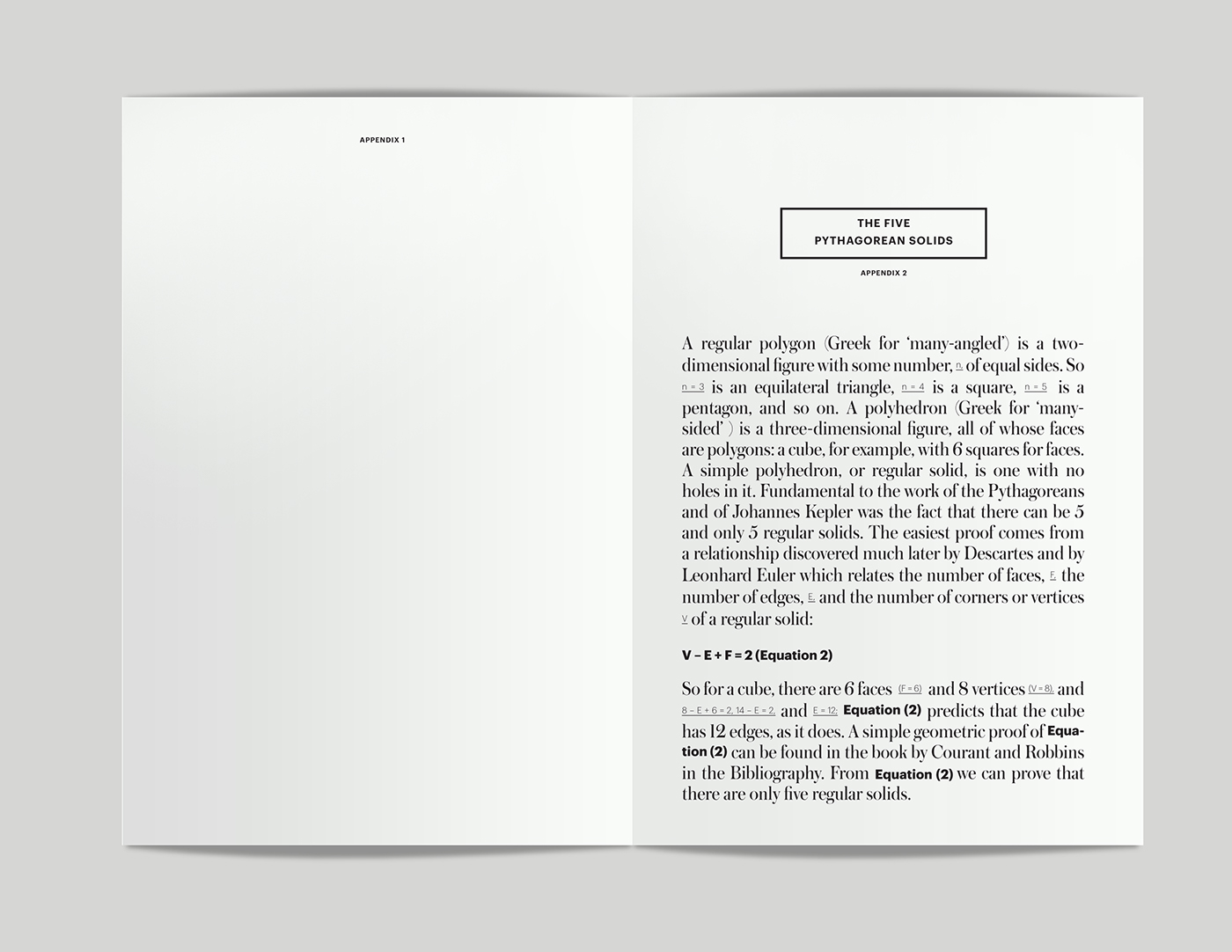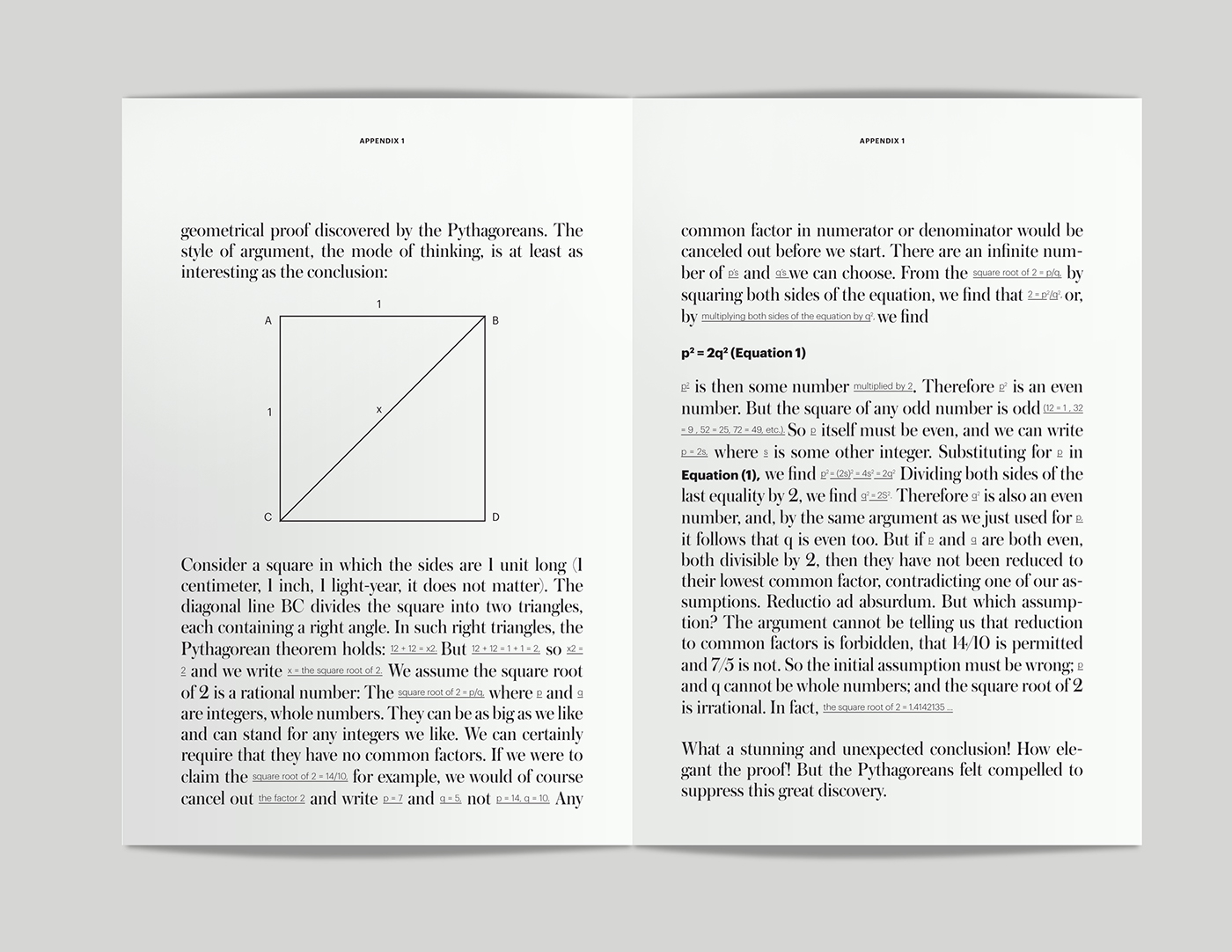How can Science and Literature, often considered completely disparate areas of knowledge, be unified in a coherent and meaningful manner? Can a piece of science writing also be considered a literary classic?
According to the physicist Niels Bohr, “The opposite of a fact is falsehood, but the opposite of one profound truth may very well be another profound truth.” Literature reveals truths, while Science is a search for facts. Identifying the patterns and usage of persuasive and poetic devices can enable us to become discerning readers and better writers.


Carl Sagan’s Cosmos unifies this dichotomy by expressing truths about humanity in the process of explaining scientific facts about the universe. The method of this unification is shown through various typographic styles and experimental typesetting that highlights his greatly convincing writing technique. Sagan’s text has also been designed to influence the pace and rhythm of reading, such that the reader is made more aware of the expressive and poetic quality of his writing. Typography is thus utilized as a form of subjective annotation.
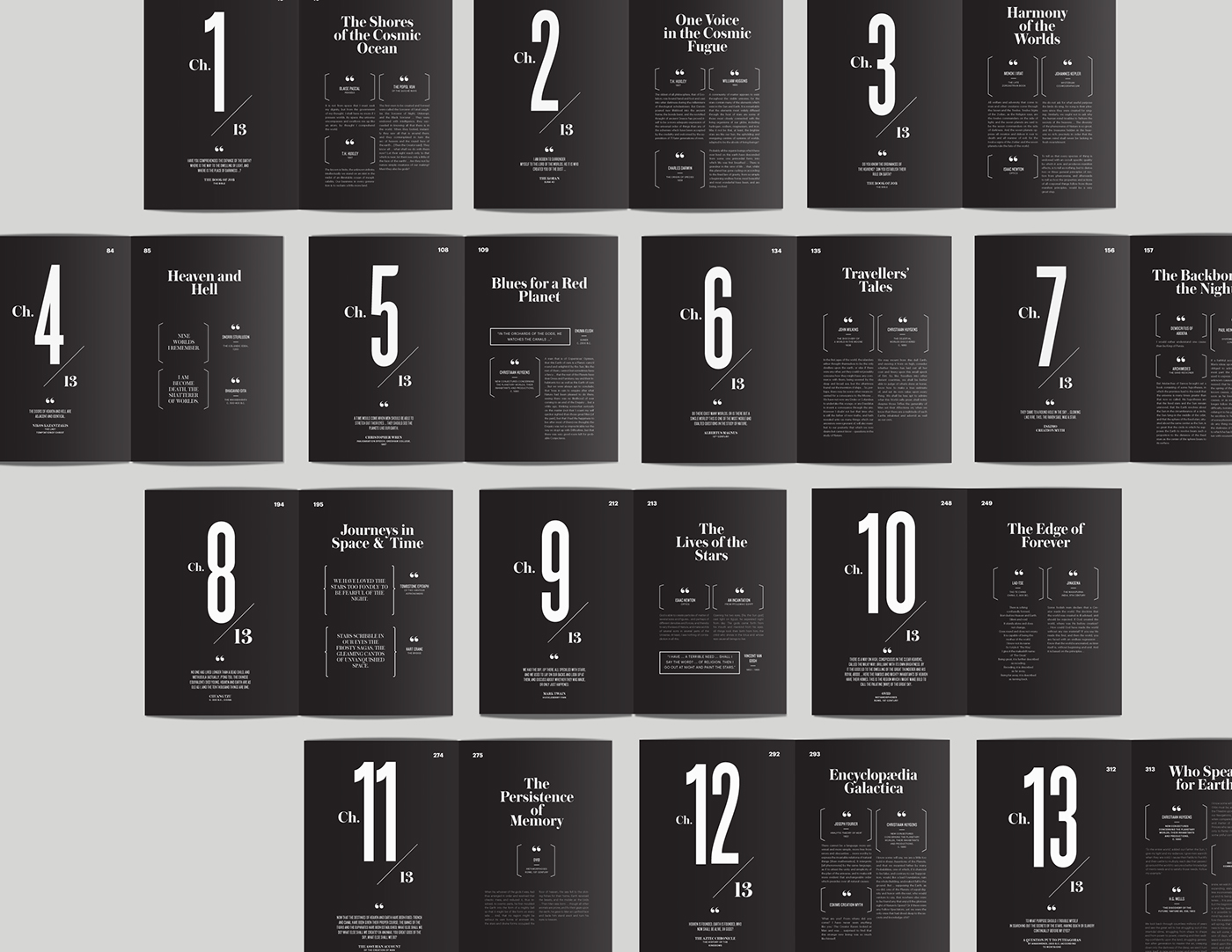
Gaining an awareness of the vastness of the Cosmos can empower us to become responsible citizens of the Earth. This typographic redesign of Cosmos aims to inspire readers to become more critical through an examination of literary technique, but also more compassionate through an understanding of Sagan’s view of humankind’s place in the universe.
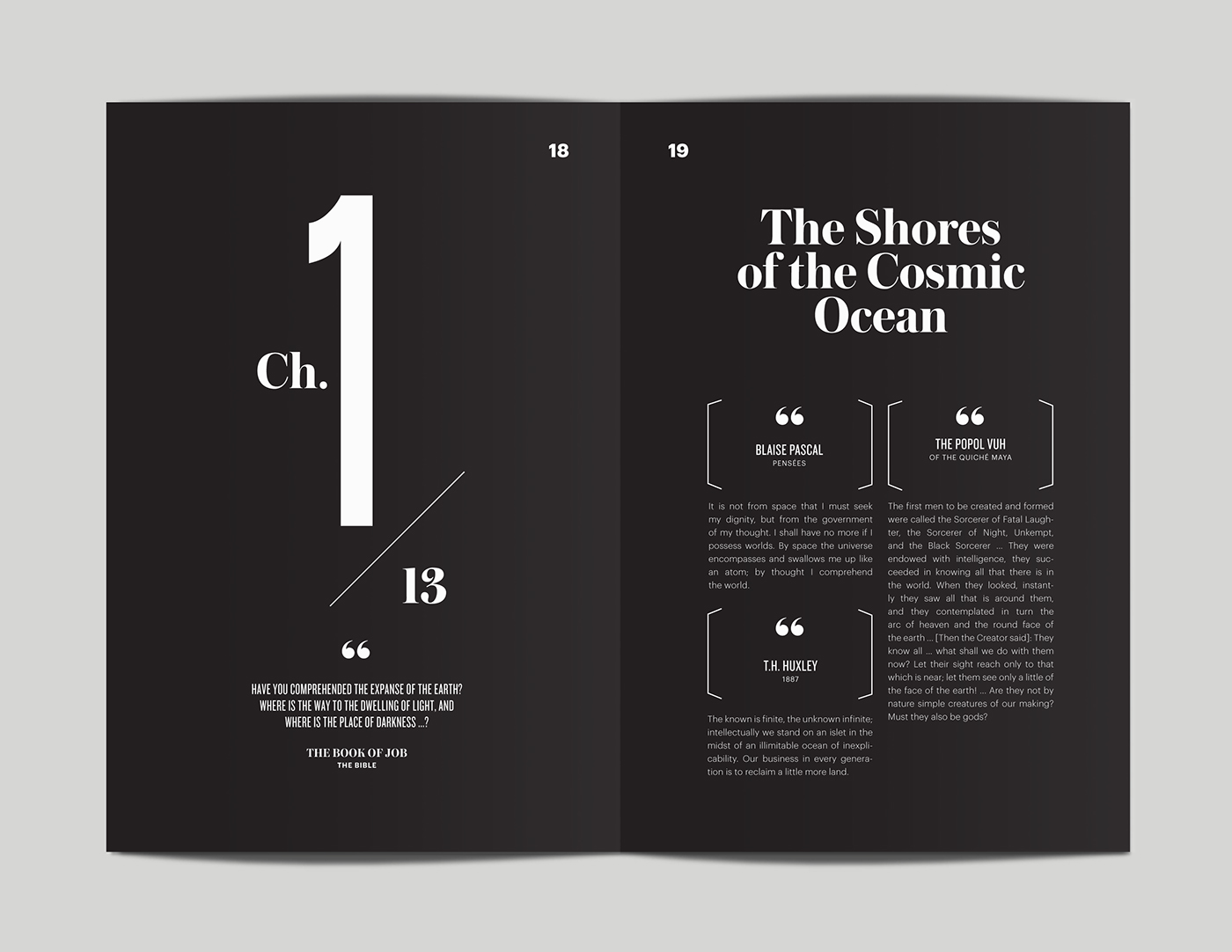

The text has been redesigned to emphasize Sagan's use of repetition as a poetic and persuasive device. Line breaks occur at every moment when a word repeats. Consequently, the shape of the text shifts and patterns in the underlying sentence structures are revealed.
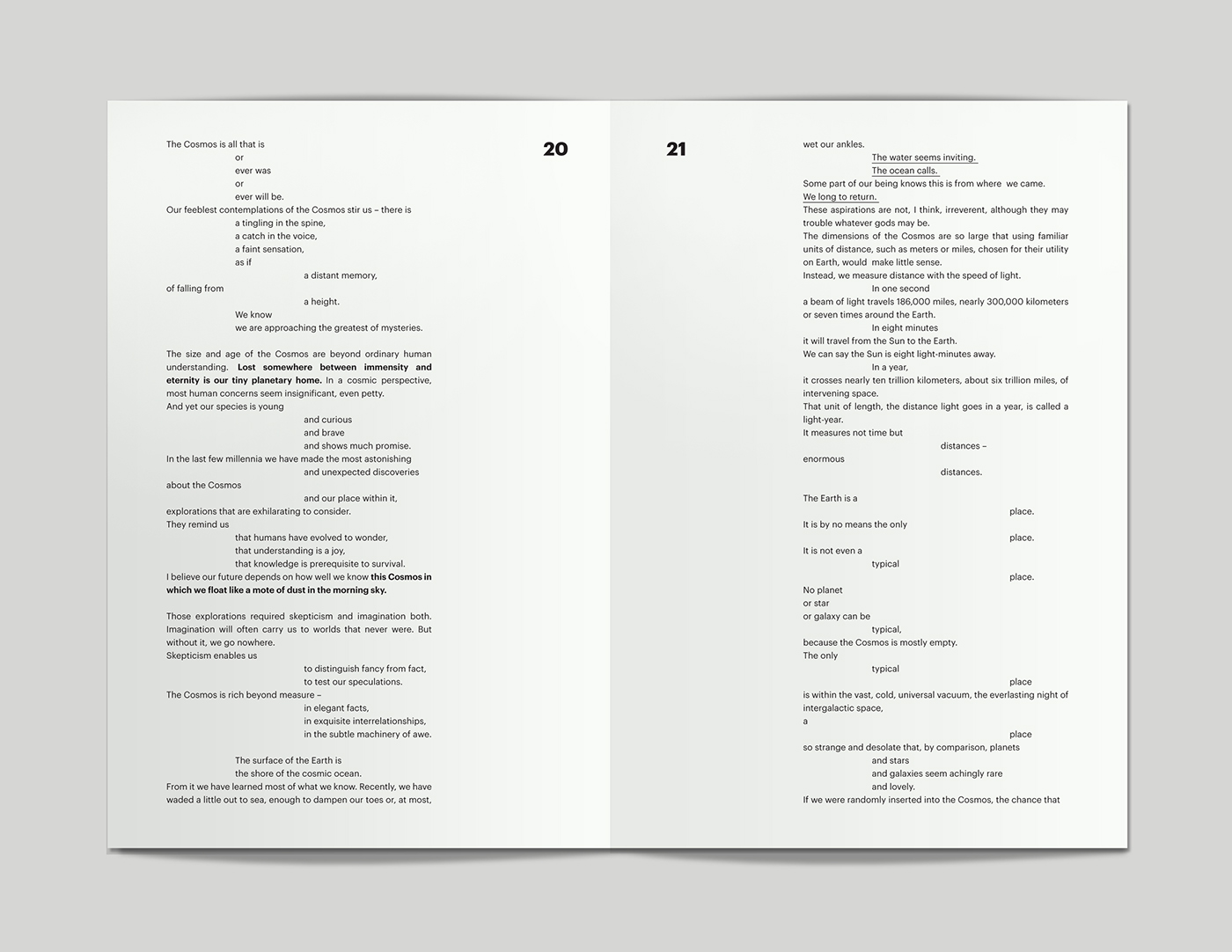



As Sagan breaks down complex objects in the universe into the tiniest forms of atoms and molecules, the sentences themselves break down into individual words on a single column to mirror the content.



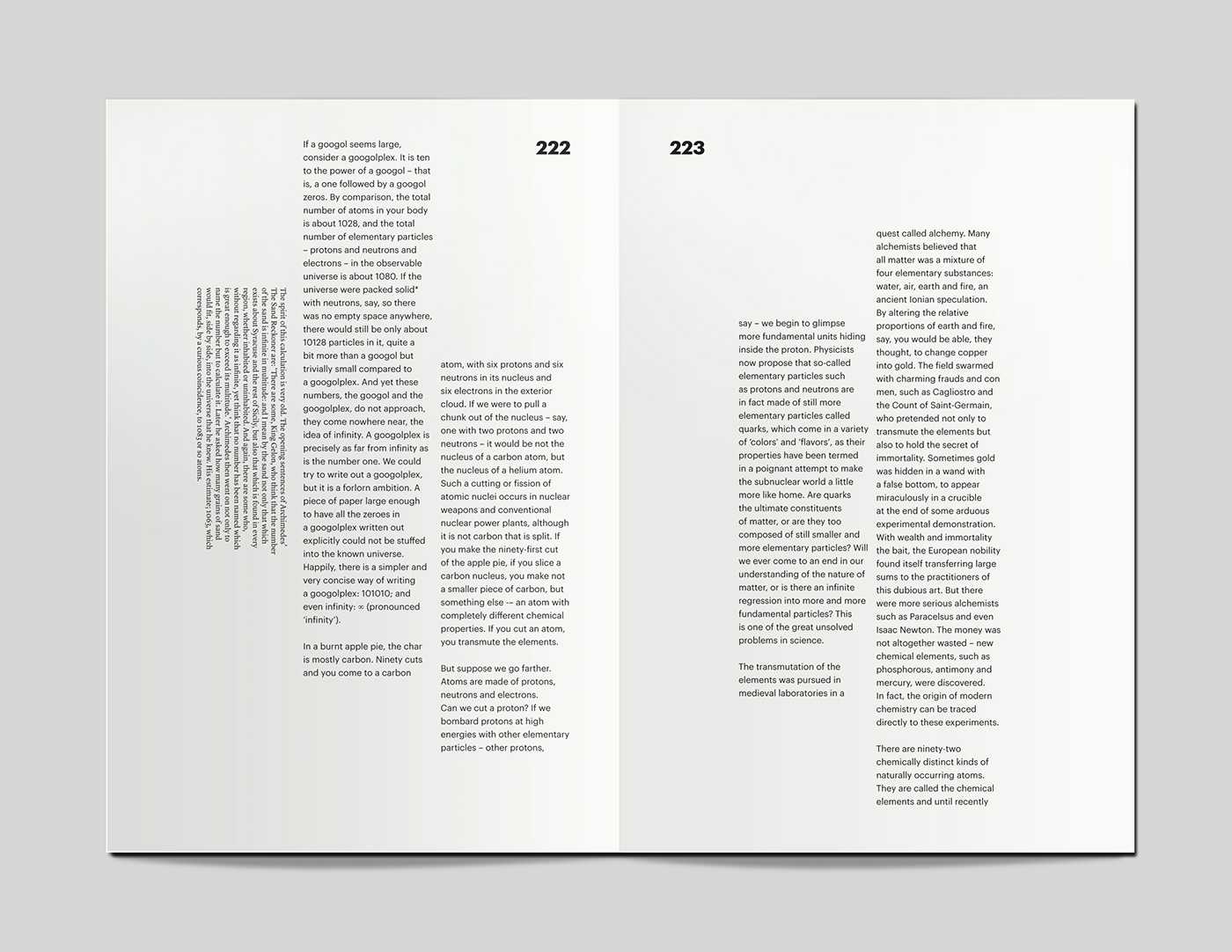
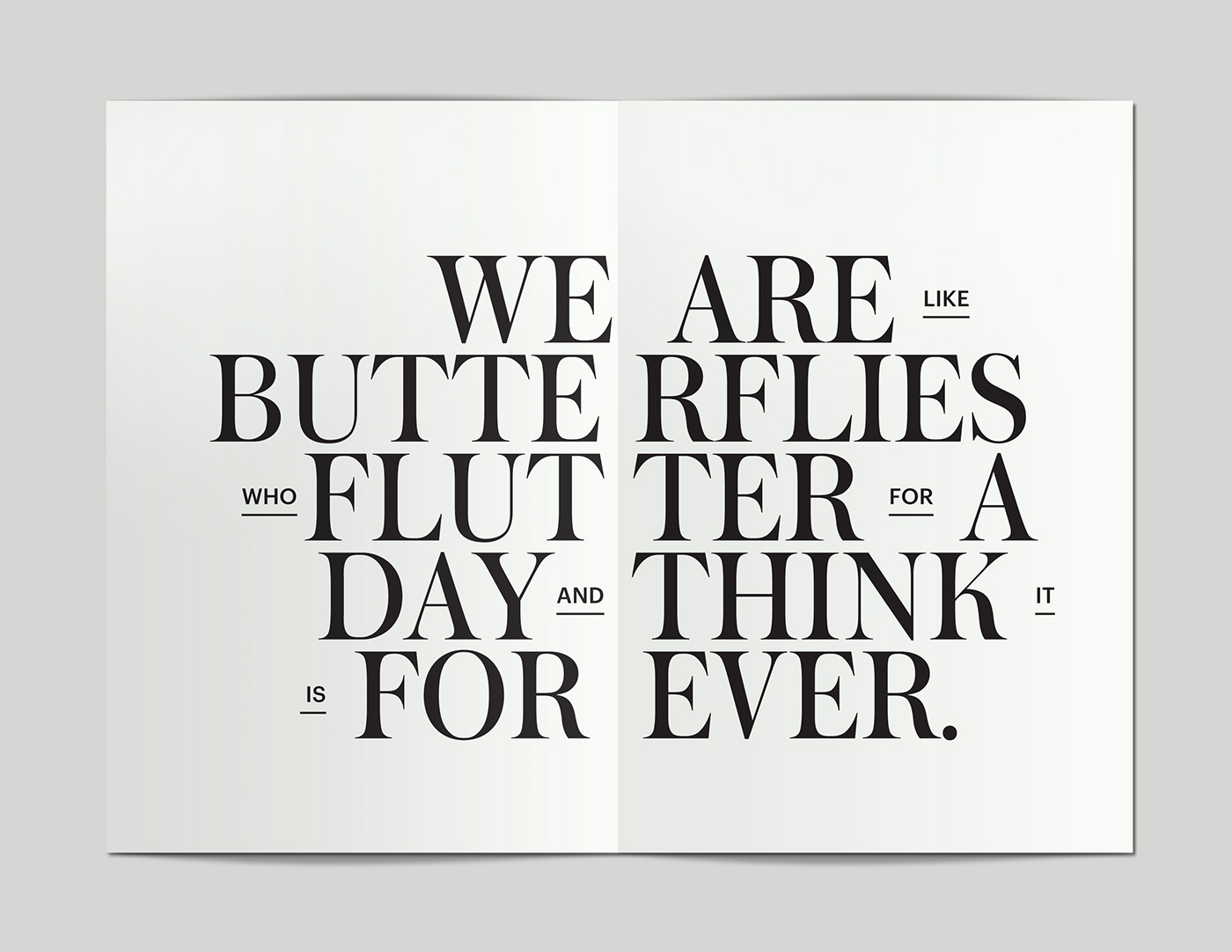

When Sagan attempts to recreate the thoughts of a prehistoric man, the type becomes large such that the reader's pace becomes slow and plodding, and huge spaces appear between the words to parallel the gaping holes in his knowledge.

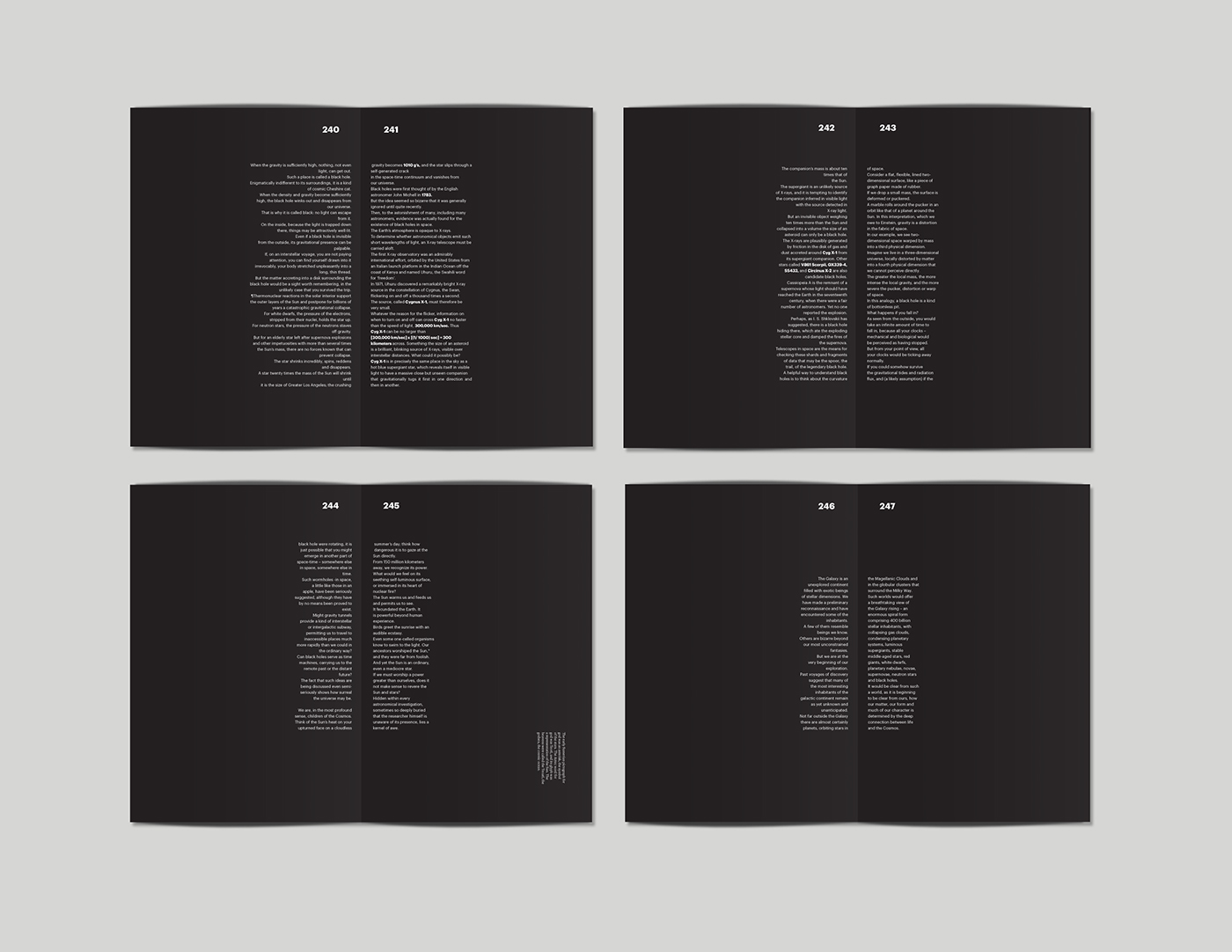
When Sagan explains the existence of black holes, the text on the pages are arranged on both sides of the gutter. They then decrease in quantity over the subsequent pages to illustrate the metaphorical black hole at the center of the book.
